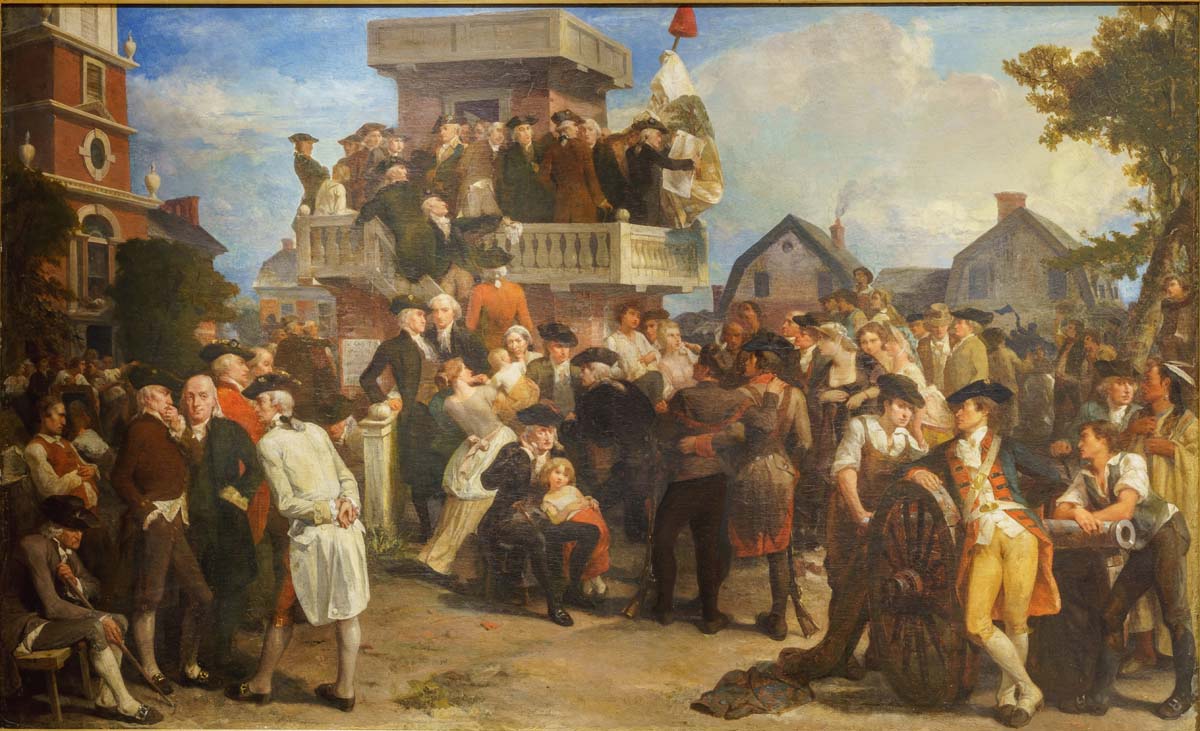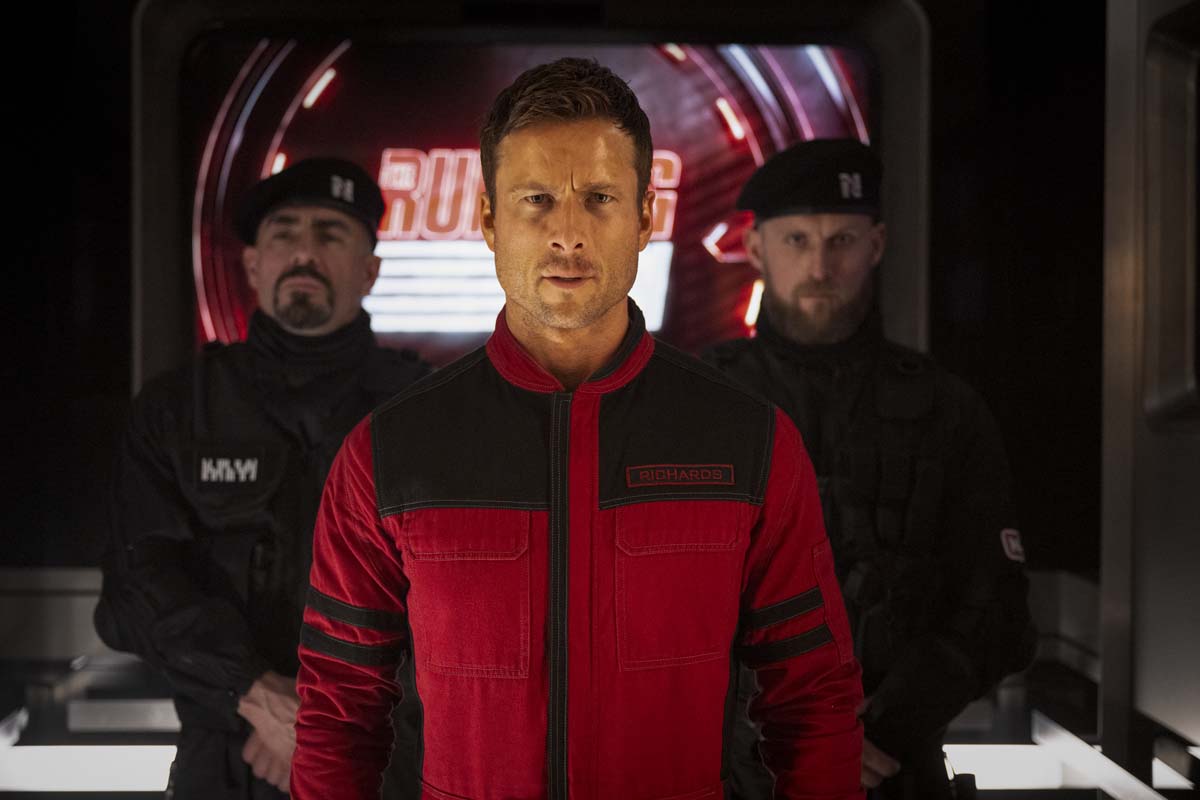Bugonia
A discussion about a 30-year career collaborating with the same director, understanding the philosophical aspects of editing, and how to collaborate with the film’s … audience.
Today on Art of the Cut, we’re talking with Yorgos Mavropsaridis, ACE, the editor of Yorgos Lanthimos’ latest film, Bugonia.
Yorgos has been on Art of the Cut before for Poor Things and for The Favourite for which he was nominated for an Oscar and a BAFTA, and won an ACE Eddie. He was also an ACE Eddie nominee for The Lobster. In addition he edited The Killing of a Sacred Deer among over 100 other international film credits.
Yorgos, it’s so nice to have you on Art of the Cut again. I loved talking to you on your previous projects, and I’m sure this will be a great discussion as well. Welcome.
Thank you for having me, Stephen. It’s a great pleasure to talk with you in these podcasts. I always enjoy them.
Many of Yorgos Lanthimos’ project are outside of the normal Hollywood scripts and ideas. They’re very unusual and interesting, fascinating projects. When you saw the script for this, what did you think?
I know Lanthimos was interested in the project long before the idea of the project. It is a subject that would interest him. I suppose it’s a bit different this time because it is not his conception. There is a script which is very solid. You can see Yorgos Lanthimos’ worldview in the film. He has themes that he likes to explore.
How - in editorial - can you support the themes that he likes to discuss?
We’ve been working together for almost 30 years now, so we’ve developed a connection between us which is more than a relation between a director and an editor because I’ve known him personally all these years. I know his idiosyncrasies.
I understand his worldview. We have a lot of common interests and common existential experiences. The way we approach reality around all of these things comes with time.
I remember when we would we did Kinetta (2005). Kinetta was the experimental 16mm film we did before Dogtooth (2009). At the time, it was not about making a film, it was more about him expressing his own personal being at the time.
And somehow personal in the sense of his own relations with people and how he communicated his environment. And it happened that at that time – because there was a question about how to end the film - we could end it in a more, elevated way that the two characters, the main characters, they meet each other, they start a romantic relationship. That was one ending, and the other one was they just couldn’t communicate.
It was the mood that he was in at the time, so it’s more than a relationship between what is better or not but it’s what expresses his personality, idiosyncrasies, and the way he views people, and his hard view and examination of humanity. It’s always there.
I knew that before he even made the feature films. We developed that because we worked for about 2 or 3 years together in the commercial advertising business. Back then we were discussing about films all the time. Doing commercials was a way to communicate with the arts of filmmaking.
It was not a job. We managed to create a code between us, and it was solidified as years went by through the actual experience of editing with him.
It’s the same method we had from the beginning - not really discussing things, but me trying to feel whatever is there in the picture, then interpret it in my own personal way, in my own personal idiosyncrasies as well, because I have also a way of looking at things.
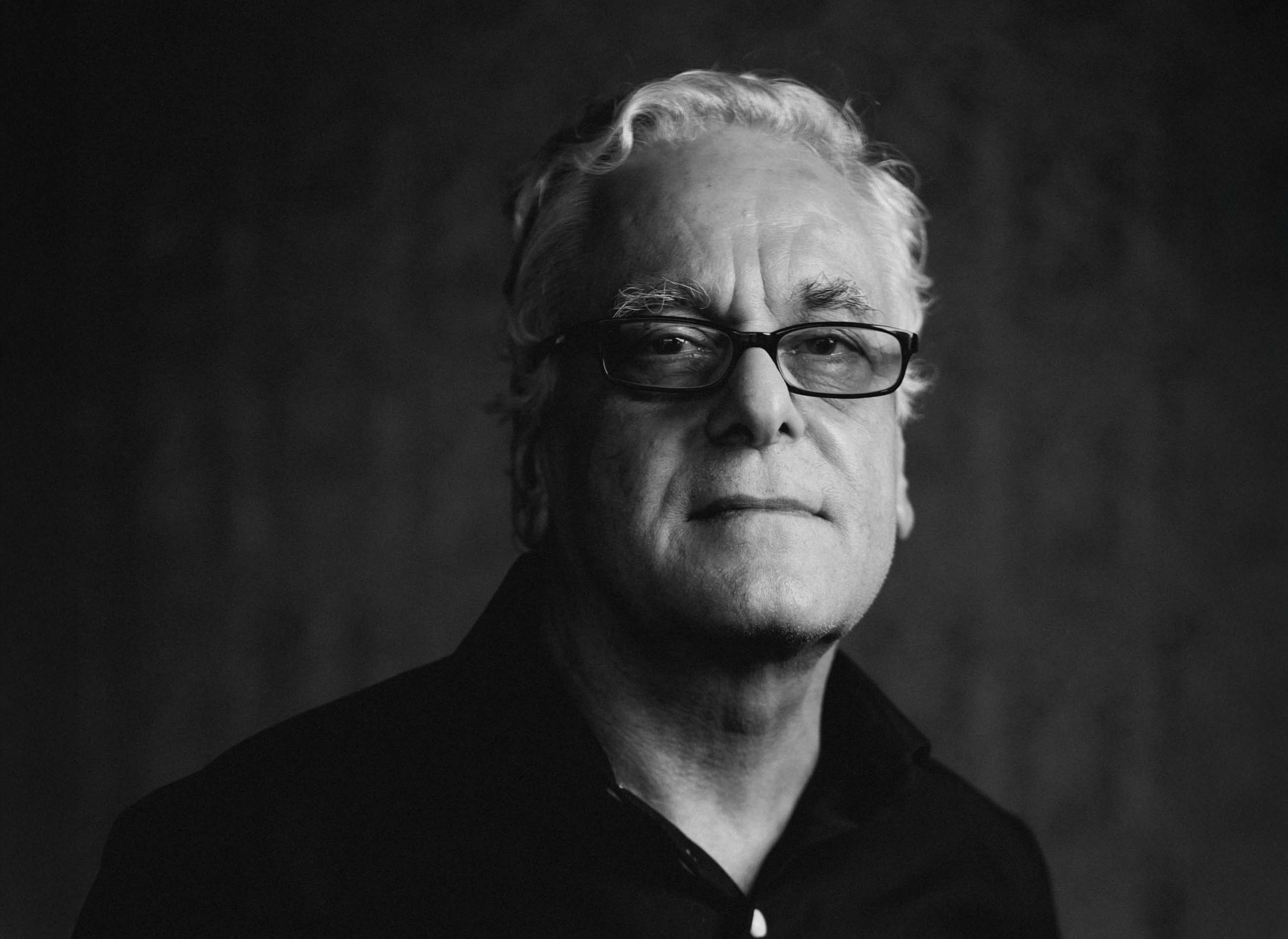
Oscar-nominated Editor Yorgos Mavropsaridis, ACE
I worked for many years and I’ve done many films and editing in the last 10-15 years has started interesting me in a more philosophical way than when I started editing, which was just how to cut between this and that.
So it became something different as well. Editing is not something I need to discuss with Lanthimos. There is a communication there and I know where I’m going because I can see it in the material. Then we start an exchange of ideas: Why don’t we try this one?
Why don’t we try that? Then we interpret the script with his vision in an aesthetic way that pleases him and how he feels he needs to connect with his viewers. He doesn’t hide behind the edit. He’s there. You can see it. You can feel sometimes that it’s a bit awkward, but he does that intentionally.
So having a personal relationship with the viewer is always a model that we are very interested in - not only about the script, but how we deliver the script and how we communicate this to the viewer, and what reactions do we expect them to have?
Because in our films, on our end, it’s always a matter of knowing - first of all - that every viewer will interpret it his own way with his own frame of mind to allow the viewer to - with his own personality - interpret and be in that situation as well.
You mentioned that you have changed from a more practical approach to editing to a more philosophical approach. What is that approach or how has that view of editing evolved?
When I first went to film school the lessons that were interesting were acoustics and optics. I started reading a lot of articles about neuroscience and how modern neuroscience explains the way our brain constructs our reality. I’ve been interested for many years in that.
One of the books that gave me a lot of answers and helped me a lot was Will Storrs’ “The Science of Storytelling.”
He connects the theories of modern neuroscience - of how the brain constructs reality. We have the filmmakers, the artists, the authors, the auteurs, and they create the reality that they need to transmit to somebody else’s brain. So there is a connection there.
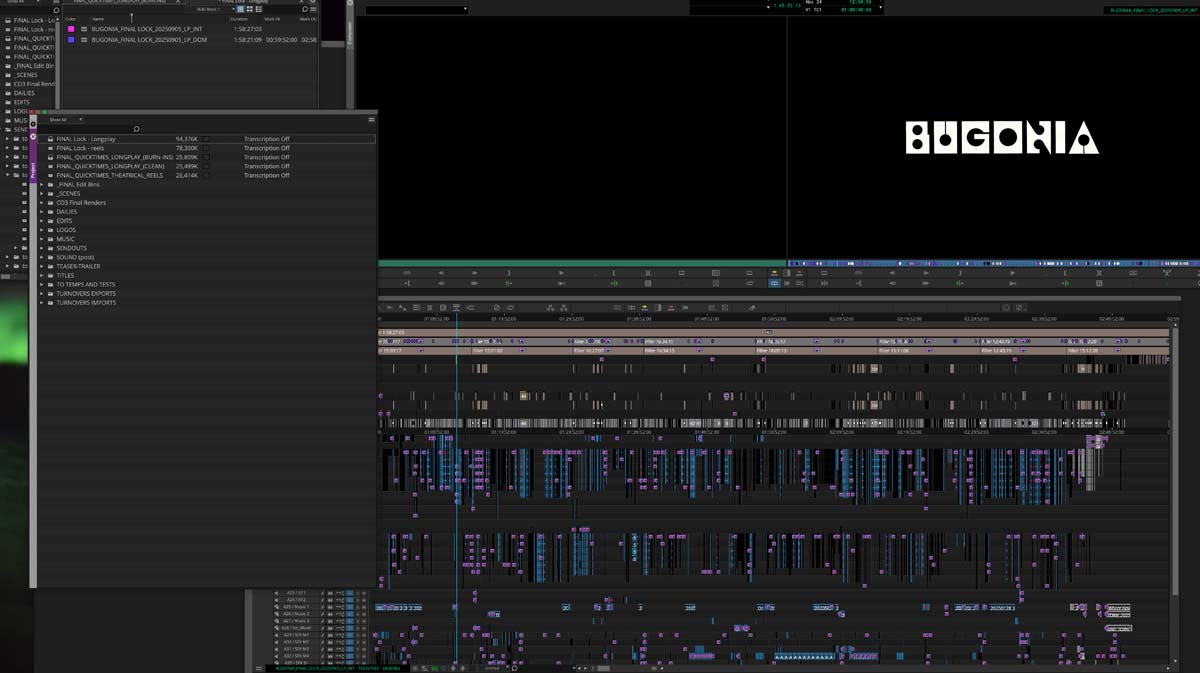
Avid timeline screenshot
Then, by philosophizing more about it, I was very much interested in Bergson and then later some book by his student, Gilles Deleuze (Henri Bergson’s pupil and author of Cinema 1: The Movement Image and Cinema 2: The Time Image.)
I connected his ideas. Because they do connect with your brain waves, right? It does connect with your beliefs. It does connect with how we construct reality - the works of art, the film, a book. It’s not somewhere objectively. It’s somewhere between.
It’s a meeting between the author and the viewer or the reader. You have a very specific role as an editor between these two worlds. You need to help communicate. You need to understand the vision of your director - what he needs to transmit. It’s intangible. It’s up in the air. It’s just a feeling.
Then you try to transmit those codes to somebody else’s brain - a viewer’s brain. So there is a responsibility there as well. There is a magic there as well. But there’s an aesthetic responsibility. It’s more than that, as Godard said, it’s an ethical responsibility.
What kind of cinema do you want to make? What kind of things do you want to present to people? Ideas that just replicate the so-called reality?
Just satisfying the main basic needs or just having a good time and not thinking about anything or playing with your synapses - the way you perceive reality and maybe asking questions that you need to rethink or engage in this way with the world of the filmmaker, which is difficult and it’s a different experience in any case.
No. It makes you feel or see things a bit differently. He has a different aim to achieve somehow.
At the beginning of the movie, you’re intercutting an opening discussion or exposition while Teddy and Don tend to their bees and do yoga with the shots of Michelle getting ready to go to work and arriving at work. Was that scripted as intercut? And how closely did you stay to the intercutting of the script?

Yorgos working at his cutting desk in Athens, Greece
Definitely, it was scripted, but at some point we decided it was too long. We eliminated a lot of explanation from Teddy. The basic structure is what’s in the script.
The way we edited that was to find the right rhythm - not to overextend, not to be over-explanatory, and to put the seeds of some idea that are later developed, for example - although they do seem to be completely different characters, they do share certain common things.
It’s impossible for these two to connect because their perception of reality is completely different. This is one of the themes that Lanthimos likes to discuss. What is this reality we’re talking about? So if it is a construction, let’s discuss my reality now.
The way I see it - the similarities between these people, and the differences. The script, of course, had - to the world of Lanthimos - these ideas about fake news or about the people who believe in fake conspiracy theories.
So it’s an extension of his world to something that exists as a matter of fact. And it makes the film modern in that sense, in the sense that it affects us because this is our common reality, because apart from our subjective reality, we do share a common reality, which of course, sometimes is the same as others. Sometimes it’s a completely different reality.
So they do exist, these worlds, different worlds, different way of perceiving reality. We are in a situation that half of humanity believes that the climate is declining, and we need to help with it. Some other says, “No, this is bullshit, forget it.”
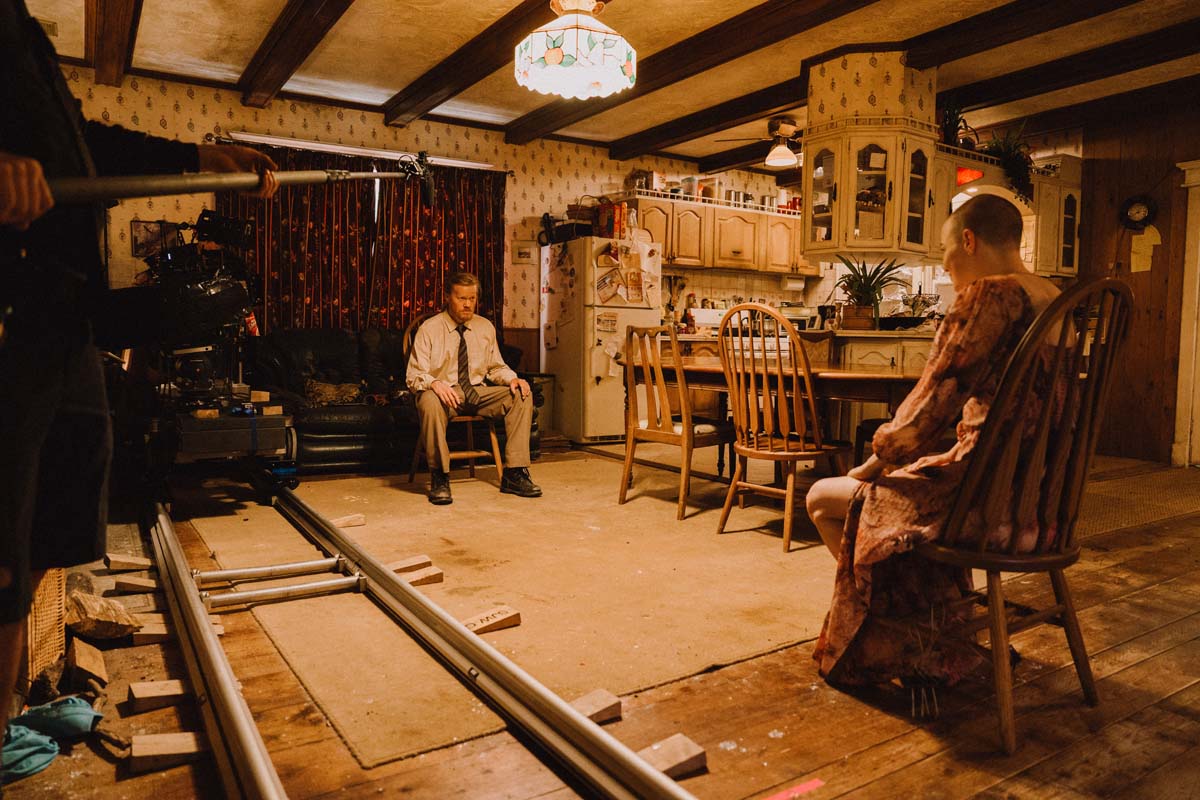
Talk to me about temp score. The score is very interesting. Very eclectic and, there’s also some very strange sound design in there.
Lanthimos did it the way we did our previous films, like on Poor Things. We also worked with the composer - Jerskin Fendrix - like this on Kinds of Kindness. He gives us the score, he gives us music ideas before the shooting starts.
This time Lanthimos advised Fendrix not to even read the script. On Poor Things he read the script and then he produced some music.
On this one he just gave him vague ideas like, if I remember correctly he said to write some things about bees, about basements, alien spaceships, so we did have the music from the beginning, but I don’t use it during the assembly - during the time I’m starting to understand the material.
T hen when we start to deconstruct it – to decide if this scene should be there or is it too long? Do we need to bring this scene forward to create a more cinematic construction?
We start using the music because we have themes - repeated themes and variations of the same theme, so we can use them like this, or edit them together.
So we use all this material to work with the edit and when we’re satisfied we send it to back scene-by-scene for him to smooth the transitions between the cuts of the music or think about different orchestration, so the music is very important during our edit and of course this is a relation with Jerskin that has developed.
For the sound design with Johnnie Burn we go back to The Lobster (2015). So there is a connection also with Johnny Burn and Lanthimos and me. I can ask him, for example, “Can you please help me with an idea for this scene?” because the sound informs the edit as well.
They go together. He has a lot of time to do his work and suggest things. Lanthimos is a director who needs his collaborators to be creative. He needs them to suggest to him “What do you think about this or that idea?”
There is a period of trust that has to develop, because you don’t want to to go in a different direction than what Lanthimos says. It is his world but he accepts your creativity if it is in the interests of his own approach.
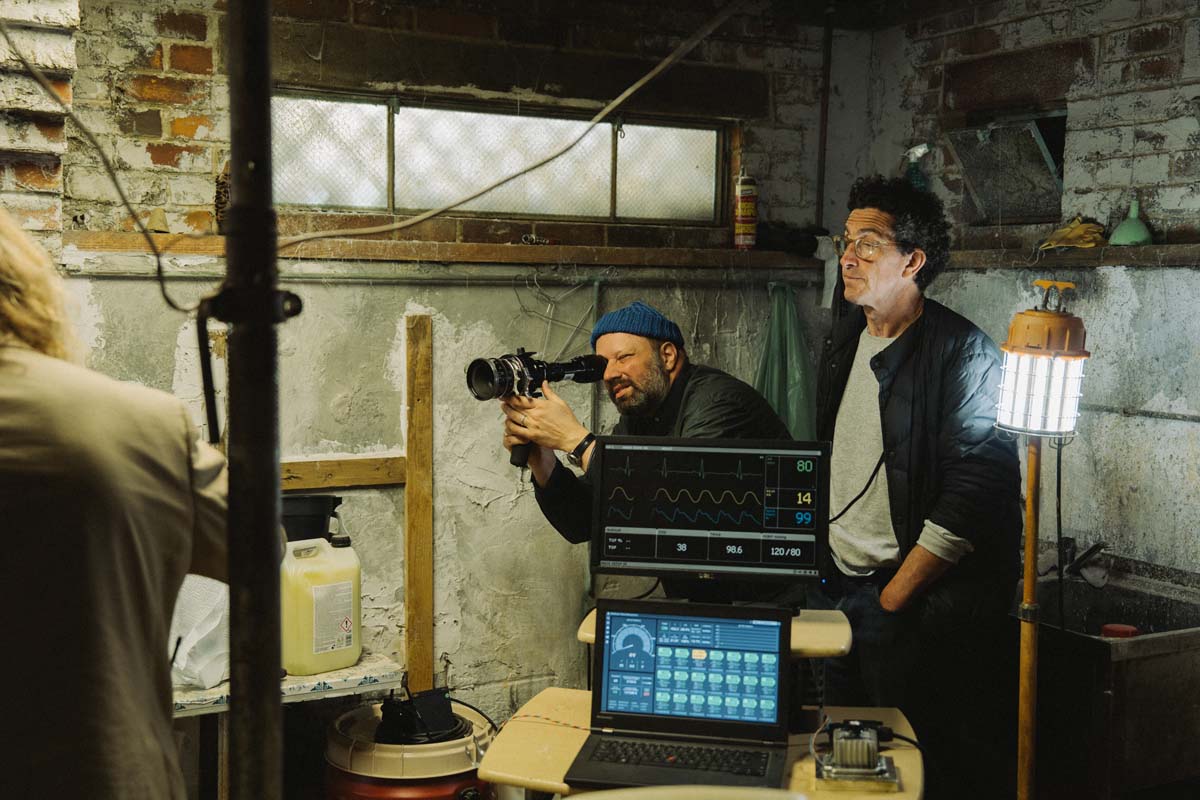
Did I understand correctly that you don’t use any music before the director’s cut or even during the director’s cut?
I edit during the shooting. This time the collaboration was more important and more back-and-forth because they were in England, I was in Athens, and the material was sent here to me. Because of this particular reality - and the unpredictability of the character of Don -we had to closely watch his scenes and make sure that we had everything we needed, so Lanthimos wanted to see the scenes as they were edited.
The script was - as I said - very well constructed and by following the script you could create an assembly which was reasonably good. Then we work on the performances: if we have the right tone for the situation. Then when we start the second phase, which is the fine cut, which might take longer time because it’s mainly discussing ideas or exploring a new cinematic way.
During the final cut we do have some screenings with friends. We need them to feel the rhythm of the film. That’s very important for for the editor to experience what Eisenstein said is the fourth dimension of film: it’s an experience that happens in real time. So you have to experience that and see if it’s okay. We give the edit a lot of time because It’s important for us to understand what we need the viewer to know at this point, what we need and feel and how to guide him.
In this film, the characters are very strong, very rigid and they seem to know exactly what they want, so it’s very easy from the beginning to say, “Okay, I know this character.” Well, then the aim was to create doubt. Are you sure you know about them? Maybe something will happen to create this tension. The tension was not created by action, it’s created by a dialogue.
It’s by an exchange of dialogue and philosophical points of view. Are you an alien? Are you not an alien? Does Teddy really believe theses things? There are all these doubts. That was the way to communicate with the viewer during these scenes. The plot has to be clear and has to be understandable, but there’s the relationship also between the creator and the viewer.
What is it that you want your viewer to feel or hope and how does the viewer bridge the gaps in the story with his own thinking and with whatever prejudice they have. So we were interested in the viewer’s experience - not in the classical sense. There is no hero to identify with - to have empathy for… to engage in this battle of wits. The bees are dying, the corporation, the fake news, the conspiracy theories, we need the viewer to be in this environment as well.
There are a few - I don’t know what to call them – “date cards” or graphics that appear on screen to count down to this lunar eclipse that is pivotal to the film. There were sound effects on all of them. There were big sound effects or big hits for the transition for several of them, but not all of them. For one of them the hit is delayed. Why did you break from a big hit on the on the cards?
It’s playing with the expectations of the viewer, then taking it away from them.
One of the most complicated things to do as an editor is to cut a scene around a dinner table. You have a dinner table scene in this movie. Talk to me about building that scene, the difficulties of it, and how to decide who you’re going to be on in the coverage. When are you going to go wide? When are you going to go on a reaction shot? What prompts you for those?
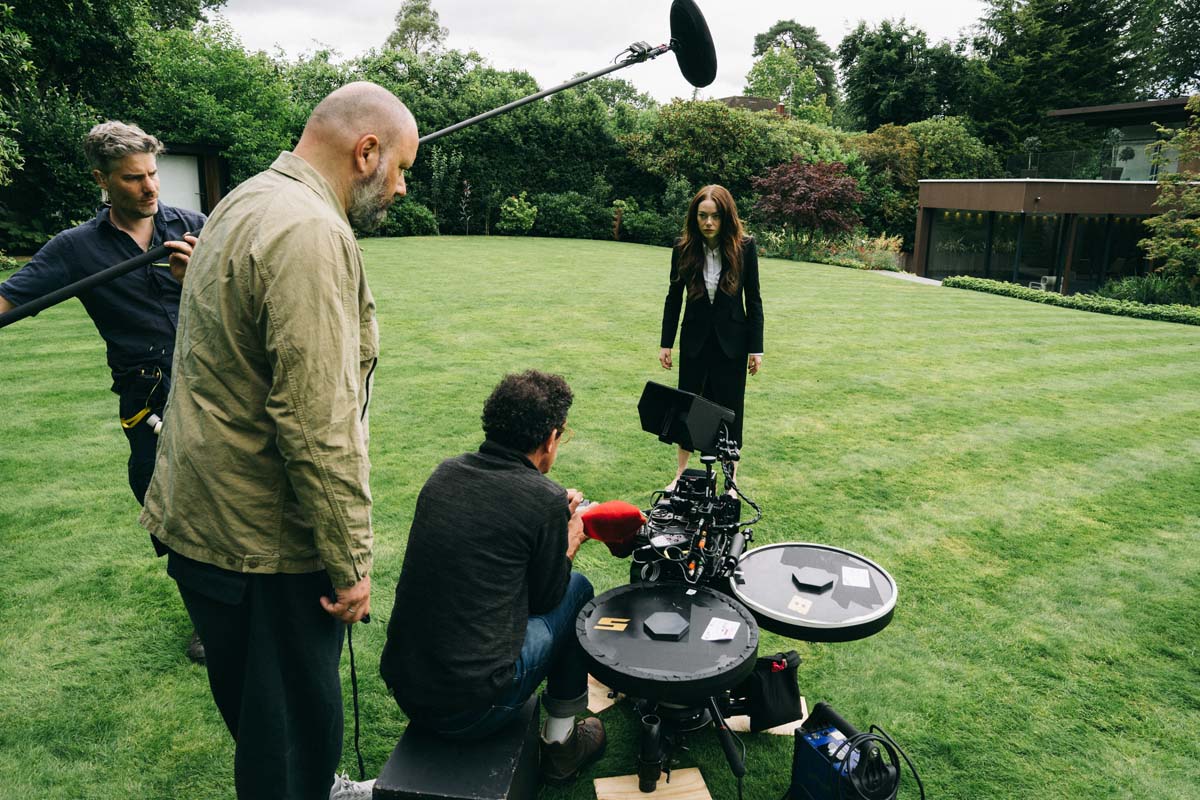
That was one of the scenes that took a long time to finalize. We went through a lot of trial and errors working on this scene. First of all, we had to make it shorter.
One way we used in the beginning was to incorporate it with something that happened before. So create this small sequence that takes us in the scene. When it starts, he says, “So now we start.”
Then we have Don eating these meatballs, which I thought was really funny. We incorporated moments from other scenes.
We had to be respectful of the fight, the battle between the two and all the emotions that go through their heads, through the faces, but also respect the presence of Don. For us, Don was very important in all the scenes when he was present.
Sometimes we used his being between them to make a third point of view: a more quiet, and unsure what is happening and “why are these people talking about these things? Is that important?” As you say, when do you go to somebody and when do you cut back?
If you notice, there are not many reaction shots in that scene. It’s not like some character says something and another one reacts, then we cut back to him.
Of course, we do see how they behave when we look to them. The idea of the scene is to go deeper in understanding the intentions of Teddy through this conversation.
There were scenes in the previous dialogue scenes where there were a couple of shots of Michelle Fuller that you could think there’s something funny here. She was saying somehow that we are very human. There was no creating doubt there.
In that moment of the script there is a discussion of the role of the bees, but you could interpret it as a class thing because one is from the point of the view of the worker bees and the other one is from the point of the queen bee.
So there’s a huge difference from their perspective, because for Michelle Fuller, bees are good as long as they do their work without complaining.
Somehow it starts building tension even though it’s just dialogue. You can feel there’s something starting to happen underneath and then you prepare for that before it erupts. Because from that moment on the film takes a completely different turn.
That’s the moment that all this slow burning of the dialogue we hoped it would pay, because it was dialogue, but tense dialogue building up to a break and a different change of speed, of changing emotions. The new information is coming fast and culminates in this crazy ending.
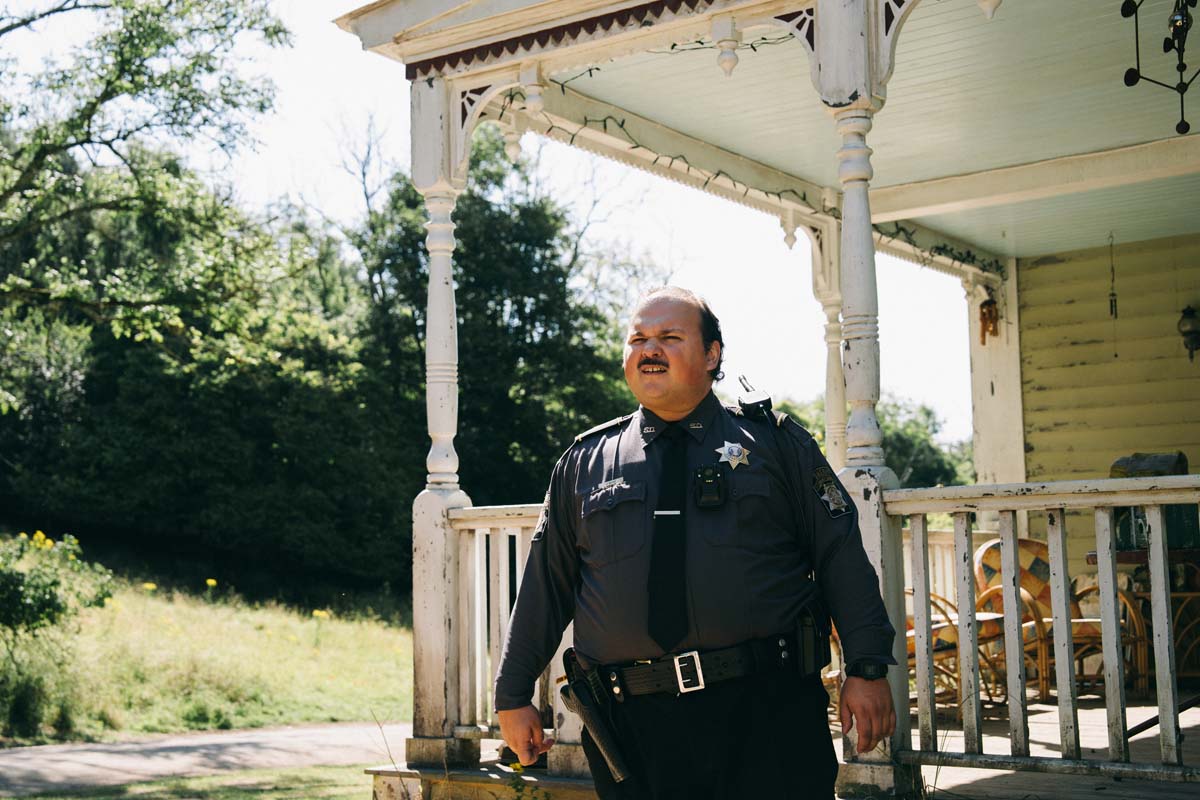
At that point in the film a policeman arrives, then you’re intercutting between what happens upstairs with the policeman, with what happens downstairs with Don. I’m assuming it’s scripted as intercut, but did you stay with intercutting that was the same as the script?
There’s a new reality that comes with the material which is time. The script had a lot of intercutting that created, not confusion, but it didn’t let things develop in a natural manner. We did the minimum intercutting we could allow for the new information.
I don’t believe you have to intercut so much to make me realize this intercutting. The viewer understands that what is happening upstairs is happening at the same time as what’s happening downstairs.
The aim of the edit at that moment was to make it more simple and stay with the characters, because something new starts there, which is the persuasion of Michelle, or the way she tries to persuade Don to free her.
So a lot of intercutting would not help the character of Don because it’s a big development for him there and the plot wise as well.
I want to jump back to earlier in the movie. There are a couple of places where you used silence: when Michelle is getting ready for her video about diversity. She’s getting made up and that’s played silent. Then also during her kidnapping, there’s a moment where it cuts to the inside of the house across a swimming pool, and she’s being tackled into some bushes and it’s played silent. Talk to me about using those moments of silence and what they’re for.
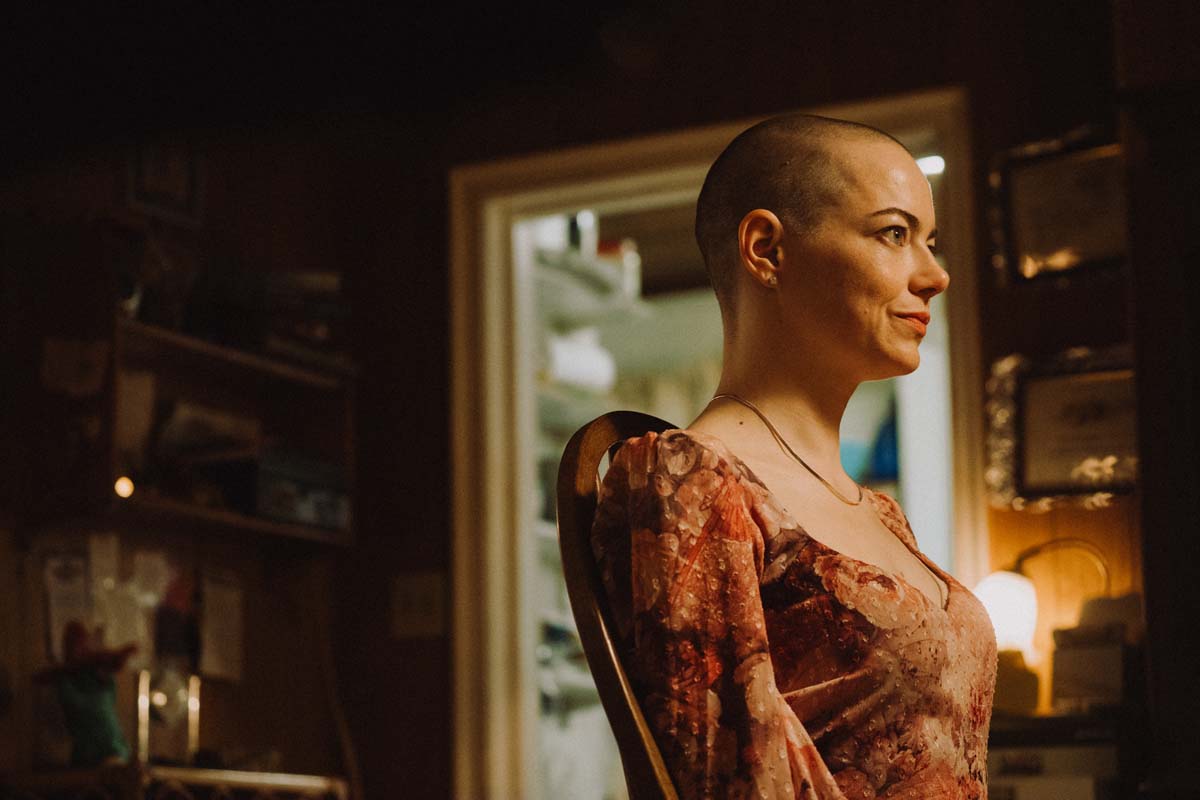
In the scene of the abduction, we cut from behind the swimming pool, and there’s a pause there. I believe it does help the viewer to see things differently - not to stay with a mode of just action. It’s a comic situation there. It was really funny.
From working with Lanthimos all these years, he likes the choreography of the scene. It’s not like the actor only expresses his emotions through a big close-up, but also the way he moves. It’s interesting and creates this moment that Lanthimos likes to see, which is a dramatic situation.
Suddenly you feel it’s a big comic as well. You feel like you need to laugh as well. Although he will use a syringe to anesthetize Michelle, so it’s an abduction. It’s a very bad thing.
All these small moments help the viewer keep in mind the situation as well, because we do need to sympathize with Teddy at that moment of the film.
You do need to believe that he has a very sane aim to help humanity. You at least need to understand his point of view. You don’t want to suddenly see him as an abductor. And of course you need to see his affinity with Don.
All this silence disengages the viewer somehow. Lanthimos wants this balance of different moods and different feelings.
You go from a very tragic situation to a very funny one, but then at the same time, you feel bad that you are laughing at this situation and all these feelings that cross between the viewer and what he sees.
Does this cut make this an experience or does it just transmit information? It’s like music. What kind of music do you want to play here? This one? Or more jazzy music?
Do you remember a smash cut earlier in the film?
Yes, we did it twice. We went through a period of trial and error to find a way to cut from Teddy being in the kitchen to him being in the black and white scene. We thought aesthetically, it would be interesting to create the same kind of transition as we did with the “Day 1” “Day 2” clips. Something big and sudden.
We tried starting with the mother in the scene. We tried starting with the needles. Dissolve. We did a lot of experiments, and then we ended up with these hard smashes as a transition. It happens there and another time when we cut from Michelle Fuller’s face to the executive’s face when she remembers having seen Teddy before.
Also a common aesthetic decision was to end the cut with black frames in between these takes. So we see his face, black, then we see the mother, black. So that was an aesthetic decision that we tried and we liked it and said, “Okay, let’s repeat that in the other situation as well.”
There was another scene - another flashback - which unfortunately we had to take out, which was during the scene in the hospital with Teddy’s mother.
So a lot of things were happening - this parallel between him and his mother at the same time Michelle was discovering what he was doing with the aliens.
That was another flashback there, but it delayed or made the tension of what he was doing with his mother and Michelle’s discovery of all the atrocities he had done, so it had be eliminated. The smash cuts also help the viewer interpret it in a different way.

That’s very interesting that there was a flashback in there. I can see why. You have a lot of balls being juggled right there and a big rise in the action. So maybe a little killing your darlings there with the flashback. Was that something that was in the film for quite a while before you decided it needed to go?
That came towards the ending of the last month of where you go through all your music, you do your screenings with friends and beloved people that help you understand what you’ve done. Then some idea comes: “Why don’t we try that?”
We needed to keep the tension there before he comes back to the house. All these things have to do with your instinct. You asked me before about how the editing affects me in a different way. This is another way that it affects me.
You need the time for feeling these things, for allowing the viewer to feel the situation, not to overstay, because the audience understands it. Sometimes surprise him, be ahead of him, but give him time to catch up with you.
So all these decisions affect this situation. Taking us back to the flashback of the mother doesn’t help the other situation. You need to eliminate certain things to attract the focus of the viewer. The viewer has to be focused.
There is an edit I loved. Teddy strikes Michelle, but on the hit you don’t cut to Michelle being struck, you cut to Don. Can you talk about that unusual choice?
That is the moment that you start feeling the strangeness of the situation because Don has started having doubts about what they’ve done, so when Michelle is struck, we cut to him with an expression of “was that right?”
We’re in the playfulness of not being very sure about the exact motivation of the characters, which is what happens in classical narration. This character is “that.” There is no doubt about his aim. So all this uncertainty is very important in playing with the characters.
This scene had to be seen through Don’s perspective as well, his subjectivity. If you think about it, the only reactions we use in the whole film is from Don.
He doesn’t talk a lot, but he’s always there reacting, sometimes with understanding, sometimes with surprise. All the reactions are on him. It was also to change the mood because there were these three big blocks of scenes.
The first one - the first examination where they go back to the basement. Don had a lot of reactions in the previous scene, but then we eliminated that.
Then there was this second scene, which we gave more attention to the battle of them as well, but mainly to how Don experiences this.
So that came naturally to us to cut to him because that was not his first reaction. We did try to give a different perspective for the viewer towards this scene.
It was a bit extreme but unpredictable because that’s how Don is. He was unpredictable. It’s how he behaves. So we had to use him the best way we could - use this unpredictability to our favor.

Is there an advantage to working with the same actor on multiple projects, as you have with Emma Stone - and knowing their performances or understanding them?
The advantage for me is working mainly with Lanthimos and understanding his approach with his actors, which is evolving. It’s also informed by the actor himself, so there’s an interaction there.
The first time was in The Favourite, that was different because there were three strong characters, and we shifted our aesthetic decisions towards one or the other depending on the moment. And in the end, the last scene shows the weight of the Queen and Abigail.
Then, a big experience for me was Emma Stone in Poor Things in the sense that there was a lot of improvization for the creation of this character and it was not something you could decide what exactly to do.
How do you behave now as a two year old or as a five year old? As a 12 year old? All of this had to be created in a character that you could go with as a viewer.
In Kinds of Kindness and this one, there is this, the ability of certain personas - cinematic personas - which is strange, but we editors understand, we know when she’s there if it’s safe, because there’s something there that emanates from them to the viewer.
It’s about how they are as persons, not as actors, how there being is behaving. That’s what Lanthimos is interested in. He considers playing roles as a playing. He doesn’t like play.
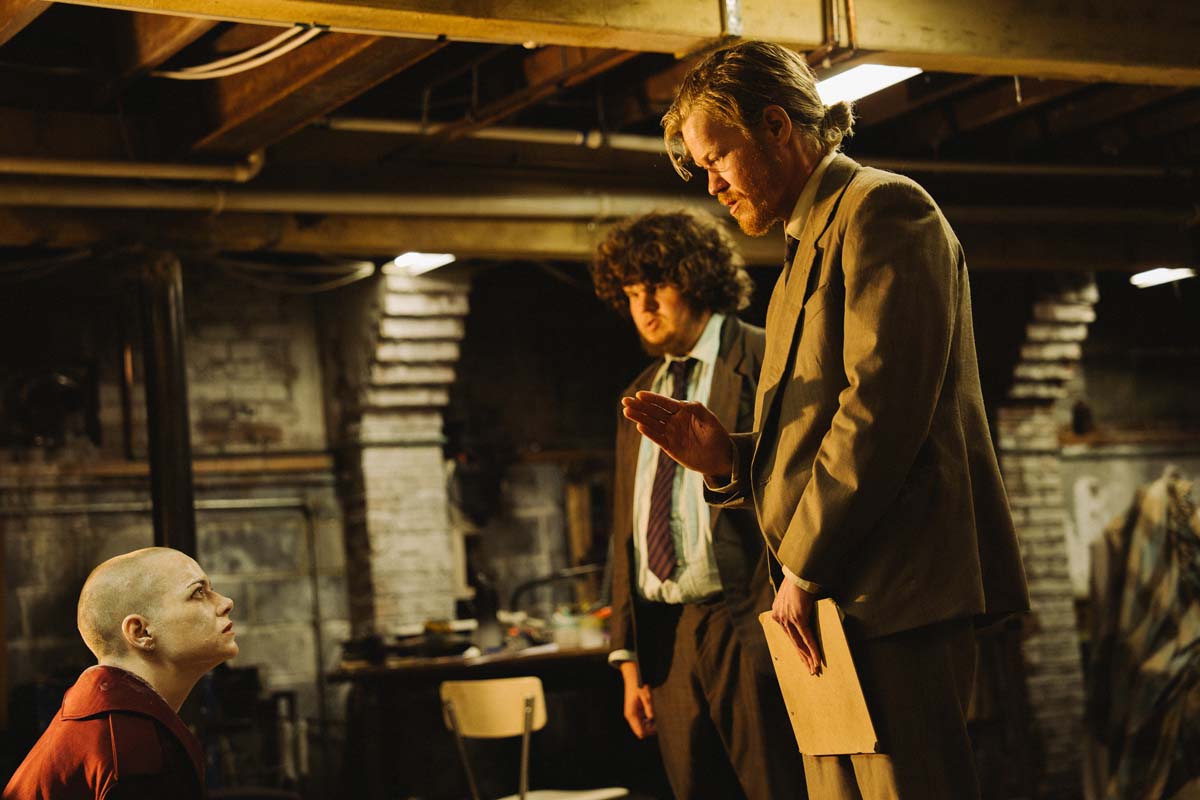
He considers playing a role as something we do in our lives, in any case. So let’s be more present during the film, not play a role, but be there and let the viewer interpret this.
They do not impose themselves on the viewer, as in a theatrical way, like, “Look how good an actor I am.” It’s allowing you to be in this psychic situation.
And what is it that does it? The face? The camera? The sound? All of this tries to create this connection between the viewer, but you need to create emotions and feelings. Anticipation. Love. You need to be in love with the person. You need to hate somebody else.
You need to take sides. You need to participate because that’s the aim of the art! To go through an experience and - having experienced this - to hopefully think about where are we standing now.
You’ve got a climax to the film and after the climax there’s kind of this epilogue or denouement. Talk to me about how long you can go from the climax of the film to the end of the film. Did you feel like there was a ticking clock for you to get to the end? How long can we go?
I always believe that because there was there is an abrupt or a sharp change of direction during the end of the film, Lanthimos is still playing with a situation. I think he makes a point of not wanting us to take it very serious, but this can be the result of what we’re doing now.
And I think that needed time. In the first edit, we started directly with the first cut from her face to the disco where some people are already lying down.
But then we extended it, started the music later and all that because we felt that we needed time to go through the whole experience as we watched and allow for the viewer to create an opinion of what happened.

Our screenings had different reactions from different people. Some people felt a kind of emotional upheaval during the end. We’re not afraid to experiment.
And also to make the transfer between a story that we see on the screen and a story that exists now in our lives. It examines: are we doing something that can have this result?
The appearance of the museum with the dinosaurs has that point, not in a didactic way, but just as a reminder.
Yorgos, thank you so much for discussing this film with us. As always, a fascinating discussion with you.
Thank you, Stephen.









